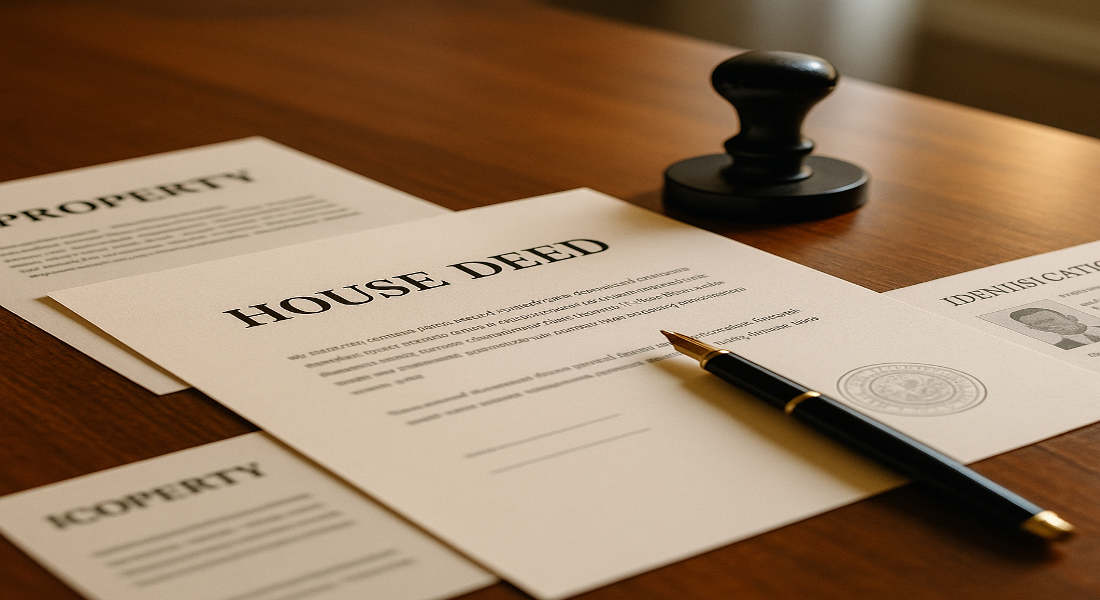Changing the name on a house deed is a necessary legal process that can arise for various reasons—such as marriage, divorce, inheritance, or simply updating ownership details. While it might sound complicated, the process can be straightforward if you understand the necessary steps and house paperwork involved.
Understanding the Importance of a House Deed
A house deed is a crucial document that outlines the ownership of a property. It serves as proof of who legally holds title to the property, ensuring rights are protected.
Without a valid deed, disputes over ownership can arise. This makes it essential for buyers and sellers alike to understand its significance during real estate transactions.
These details help determine how the property can be used or altered in the future.
Keeping this document up to date prevents confusion down the line and ensures smooth transitions in case of selling or transferring ownership later on.
Reasons for Changing a Name on a House Deed
There are several reasons someone might want to change a name on a house deed. One common scenario is marriage or divorce. When couples marry, they often wish to add their spouse’s name to the deed. Conversely, after a divorce, it may be necessary to remove an ex-spouse’s name from the property.
Inheritance is another significant reason for making this change. If you inherit property from a family member, updating the deed with your name solidifies your ownership and helps avoid future disputes.
Sometimes, people choose to update their names due to personal preference or legal changes, such as when someone transitions to a different gender.
This enables multiple parties to share ownership legally and responsibly, ensuring that all interests are protected.
Steps to Change a Name on a House Deed

Changing a name on a house deed involves several straightforward steps. First, obtain the original deed from your county’s office or your records. This document serves as your reference point.
Next, you’ll need to prepare a new deed that reflects the change of ownership. Ensure it includes essential details, such as the property description and the names of the parties involved in this transfer.
Once drafted, sign the new deed in the presence of a notary public. Notarization adds an extra layer of legality to your document.
Afterward, file the updated deed with your local county recorder’s office. There may be fees associated with this filing process.
Confirm that all changes are accurately recorded by checking with the recorder’s office after a reasonable amount of time has passed. Keeping copies of both old and new deeds is also advisable for future reference.
Common Mistakes to Avoid

When changing a name on a house deed, it’s essential to avoid certain common pitfalls. One major mistake is neglecting to check local laws. Each state has different regulations regarding property transfers, which can lead to delays or even rejection.
Not all deeds are created equal; using the wrong document could complicate your process further.
Not involving a professional can also be detrimental. While it might seem straightforward, having an house attorney review your paperwork ensures that everything aligns with legal standards and protects your interests.
Legal Considerations and Requirements

When changing a name on a house deed, understanding the legal landscape is crucial. Each state has specific requirements that govern this process. Please familiarize yourself with local laws to ensure compliance.
Typically, you’ll need to prepare a new deed. This document must clearly outline the change and include pertinent details, such as property descriptions and the names of all parties involved.
Notarization can be required for validation purposes. Verify whether your jurisdiction requires this step to prevent potential complications later.
It’s wise to consult with a real estate attorney when navigating these waters. They can provide clarity on any unique regulations in your area and help facilitate a smooth transition during what could otherwise be an overwhelming process.
Alternative Options for Changing Names on a House Deed

If you’re looking for flexibility or simplicity in changing a name on a house deed, there are alternatives to the traditional method. One option is creating a living trust. This allows you to transfer property into the trust without the hassle of frequently updating the deed.
This house legal document can help clarify discrepancies in ownership if names differ due to marriage or other reasons. It serves as proof that both names refer to the same individual.
They can provide tailored advice based on your specific situation and suggest solutions that could save time and effort.
Please, note that each real state has its laws governing property transfers and deeds. Researching local regulations will ensure you follow the correct procedure when attempting any changes. Exploring these options may lead to a smoother transition when changing the names on your house deed.
How to Change a Name on a House Deed: FAQ
Why would you need to change a name on a house deed?
There are several reasons for changing a name on a deed, including:
- Marriage or divorce: Updating the name to reflect a legal name change.
- Ownership transfer: Adding or removing someone from the deed (e.g., adding a spouse or removing an ex-spouse).
- Correcting errors: Fixing misspellings or inaccuracies in the recorded name .
Can you simply edit the existing deed?
No, once a deed is recorded, it cannot be altered. Instead, you must prepare and record a new deed that reflects the name change or ownership update .
What type of deed is typically used for a name change?
A quitclaim deed is often sufficient for name changes where ownership is not being transferred to another person. For example, if you’re updating your name due to marriage or divorce, you would transfer ownership from yourself (under your old name) to yourself (under your new name) .
What steps are involved in changing the name on a deed?
Here’s a general outline of the process:
- Prepare a new deed: You can do this yourself using a blank deed form (available at office supply stores) or hire an attorney or title company to prepare it for you .
- Sign the deed: The grantor (person transferring the property) must sign the deed in the presence of a notary public .
- File the deed: Submit the new deed to the county recorder or clerk’s office in the county where the property is located. This officially updates the public record .
- Pay recording fees: Fees vary by location, so check with your local recorder’s office for the exact amount.
What documents might you need to provide?
If the name change is due to marriage, divorce, or a legal name change, you may need to provide supporting documents such as:
- Marriage certificate
- Divorce decree
- Court order for a legal name change .
Do you need to notify your mortgage lender?
Yes, if there is a mortgage on the property, you should notify your lender before making changes to the deed. They may require additional documentation or approval, especially if the name change affects ownership .
Can you do this process without an attorney?
Yes, you can prepare and file the new deed yourself. However, because deeds are legal documents, it’s often recommended to consult an attorney or title company to ensure accuracy and avoid mistakes .




